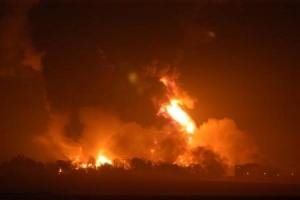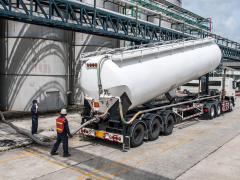Why technology is only as good as the people using it
If the oil light comes on in your car and you ignore it, it isn’t your car’s fault if you have a breakdown. The same principle applies to alarm annunciators. They alert operators to an abnormal condition, but operators must then take action to avoid serious consequences. Here Gary Bradshaw, director of alarm annunciator specialist Omniflex, warns against a worrying culture of ignoring alarms and offers advice for plant managers trying to overcome this.

The easiest way to avoid major disasters at an industrial facility is if personnel quickly identify, and act upon, imminent danger. Unfortunately, as simple as it sounds, many facilities have struggled to implement this approach over the years. Unsurprisingly, slow operator response time has been cited as being responsible for several high-profile incidents, including the fire at the Buncefield oil storage depot in Milford Haven and the Texaco oil refinery plant explosion in Pembroke, both in the UK.
Typically, the simplest solution is the most effective one and that is why alarm annunciators remain key pieces of mission-critical safety systems to this day. They are panel-based alarms that are hard-wired directly into relevant safety-critical processes. If an abnormal event occurs, the relevant window on the panel lights up and the alarm emits a sound, immediately giving operators the necessary information to act quickly. However, it is up to operators to take the appropriate action when alerted to the problem.
Put checks in place
It’s common sense that operator response time is hugely important in a crisis and can be the deciding factor in avoiding serious consequences. With an alarm annunciator having a fixed matrix display format, operators know the nature and scale of the problem at a glance due to pattern recognition, compared to the complexity of a PC-based SCADA system screen that can be overwhelming for operators to act on while under pressure.
Worryingly though, there have been recent reports of operators adopting a culture of ignoring local alarms and not taking appropriate action quickly, if at all. To combat this, many companies are turning to remote monitoring technology to monitor the status of their hardwired alarm annunciators. This has several major benefits for site managers looking to increase the likelihood of on-site operators responding to alarms quickly and efficiently.
First of all, it offers peace of mind for facility managers worried about on-site safety because they can access all live and historical alarm data whenever necessary. Next, the increased accountability and traceability that comes with remote monitoring technology improves the chances of operators responding to local alarms. Modern alarm systems typically come equipped with in-built alarm logging to record all alarms and operator pushbutton actions, meaning that in addition to monitoring operator actions, they also monitor and record the time between the alarm alert and action being taken.
Finally, alarm annunciators equipped with remote monitoring capabilities can be configured to send direct push notifications to relevant personnel using SMS and email when there is an abnormal event. This means asset managers and engineers are all aware of the problem immediately and can ensure action is taken without leaving it to chance that a local operator has seen and responded to the alarm.
All Omniflex’s alarm annunciators exceed the latest safety requirements and include an ethernet interface to the site’s top-end system, as well as built-in alarm logging to record all alarm alerts and operator pushbutton actions. Furthermore, they’re supplied with individual hardwired repeat relay outputs that facilitate further connection possibilities.
To find out more about how you can get the most out of your industrial alarm annunciators, visit website.














